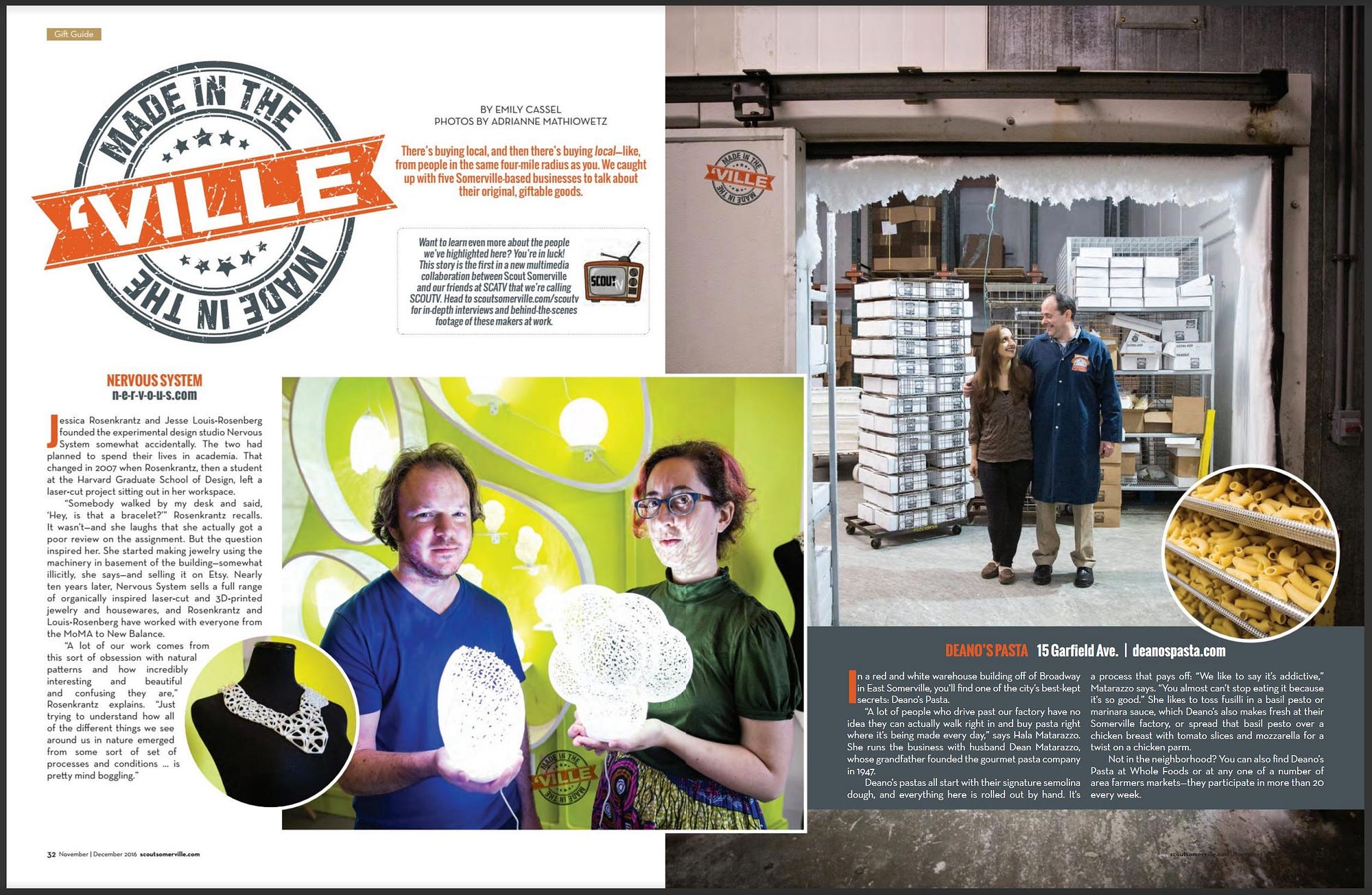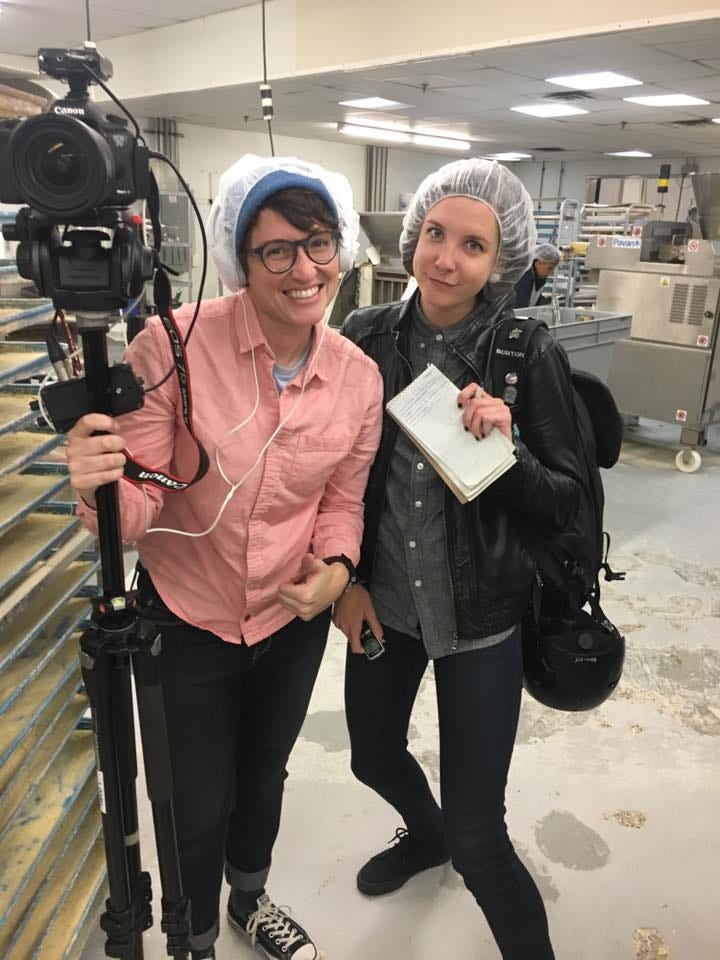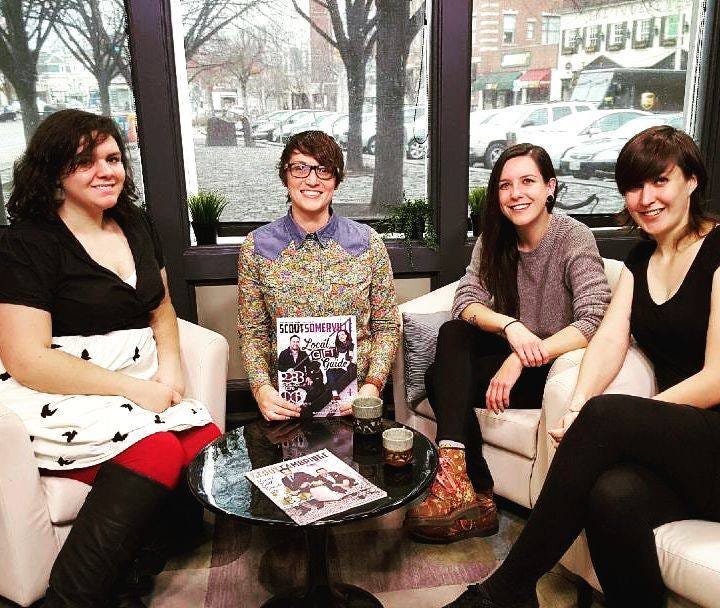Profile: Collaboration in tight spaces

This post was originally published on Medium on Dec. 16, 2016.
How Scout Magazines and SCATV joined forces to create stories for one of the most densely populated towns in New England.
Somerville, Massachusetts is many things to the many, many people that live within the roughly 4.1 square miles that make up the city proper.
It’s home for more than 75,000 people. In fact, it’s one of the most densely populated cities in New England. It’s a sanctuary city. It’s a diverse community. And it’s full of fascinating local stories.
One of the organizations telling those stories is Scout Magazines. Scout Somerville has been publishing since 2009. Sister publication Scout Cambridge picked up coverage of nearby Cambridge in 2013.
Emily Cassel joined Scout Magazines in 2014 before becoming the Editor in Chief in 2015. Cassel supervises the production of both the Somerville and Cambridge editions with approximately 80,000 copies printed.
Last year, the publications switched from direct mail only to both subscription options and drop boxes.
Cassel says the switch is part of an effort to increase interaction with the community. People who knew about the magazines had subscriptions but it was difficult to reach out to new people.
“We wanted to be really visible, and the core of what we’re also trying to do is community journalism,” says Cassel.

It’s the push for community journalism that prompted Cassel to join forces with SCATV, the long-running local community access station, to create video content that complements the work in the magazines and provides additional programming for the station.
Cassel’s partner in this collaboration is Erica Jones, the membership and outreach director for SCATV. Cassel says that Jones has long been part of the community and supportive of the magazines.
“We could have, our two separate newsrooms, gone on the next five, 10 years without ever just sitting down and saying, ‘Hey, why aren’t we working together?’” Cassel says.
So early this fall, the pair got together over some beers at Aeronaut Brewery — a place that also has a collaborative spirit, having worked with Jones on video projects — and talked over what they could do together.
“I do think now more than ever, there’s a time to come together, and work together, and pool our resources and share our ideas versus trying to undercut one another,” Cassel says.

What they arrived at is taking Scout’s series of profiles on community members and businesses and using the interviews to produce not just print and web content but also video content.
They published the first round of profiles in November and are currently working on the second series.
For two newsrooms with small staffs and limited time and budgets for training or budget changes, the collaboration was a way for both teams get create interesting content for their audiences.
“It hasn’t required anyone to step outside of their position really, or to take on any new responsibilities,” Cassel says. “ It’s stuff that we’re already doing. We’re just doing it together.”

Jones is a proponent of collaboration and a big fan of efforts to strengthen local media coordination. She sits on a regional board of directors for the Alliance for Community Media as well as participates in a number of collaborative partnerships.
“I think that these are all working because everyone believes that the strength in numbers, the ability to cross share content, and to collaborate on original news stories will really help to build a stronger informed community, be it human interest pieces, or investigative news reporting,” Jones says.
Both Jones and Cassel say they’ve seen a positive response to the collaboration from their respective audiences. Cassel says that newsrooms sometimes underestimate their audiences understanding of what it means to do journalism. She says people know that journalists are strapped and Scout and SCATV’s collaborative efforts were immediately recognized as a savvy use of resources by the people in their community.
The newsrooms themselves have benefited from the partnership from a resources, planning and reach perspective.
Scout lacked the resources to recruit or train people for production-ready video work. Cassel says it’s a lot more work than the common advice to just give a reporter a camera implies and Scout didn’t have the ability to train someone when they already have such a small staff. Cassel says she has already learned much from working with the SCATV team that has made her a better multimedia journalist.
SCATV enjoys the increased reach of Scout’s social media presence and the ease of participating in the interviews set up by Scout.
Jones says she is glad that SCATV can stay up to date on local community interests but is always thinking about how to make sure their content is getting out to the most people.
SCATV has been around for more than three decades in a state with a high density of community TV stations, numbering in the hundreds.
“The idea of how to stay relevant, how do you build strategic partnerships, how to create meaningful content, is constantly a question that we ask ourselves as staff, in terms of are we doing our job well,” Jones says. “ If we go out into the community and we ask people about us, are they going to know who we are, what we do.”

The partnership doesn’t have a formal agreement governing their work. The collaboration started over friendship and beers and constant communication has kept it running.
Cassel and Jones both cite their prompt attention to communication as being the linchpin in the operation. That, and a shared penchant for solving problems rather than being discouraged by them.
“It has never been an excuse for us to say, ‘Well we’re a small team so this is it. This is all we can do,’” Cassel says. “ We’re trying to break through the whatever minimal resources, minimal time that we have and that often for us looks like collaboration.”
Takeaways
What works in this collaborations?
- Communication — it’s practically the theme of the partnership, making scheduling and planning easier and shared between the two organizations.
- Community over competition — the organizations have chosen mutual benefit over one-upmanship.
- Capitalizing on the respective skill sets of the newsrooms — Scout contributes the interviewing and writing and SCATV brings in equipment, skilled videographers and editing experience.
- Going for it — rather than creating a complicated arrangement, the newsrooms think of the project like a pilot program they can tweak. This freed them up to get started on creating stories right away.
What are the pain points?
- Really small teams — Cassel is Scout’s only full time editorial staffer and SCATV has a small team as well.
- Editing schedules — Aligning the editing schedule of one product with the other. It was a learning experience to coordinate having the videos edited and ready to go in conjunction with the print schedule.
Are you part of a newsroom or organization that has participated in collaboration? I’d love to speak to you.
Note on republished posts: In an effort to consolidate and preserve my online work, I'm re-publishing my own writing on this site. Posts will stay live and archived on their original sites for the sake of preserving links (for as long as those sites are still live). Content produced for other publications will remain unique to those publications, but I will include links on my work page.



